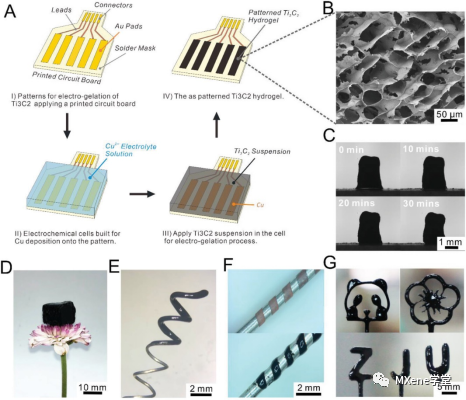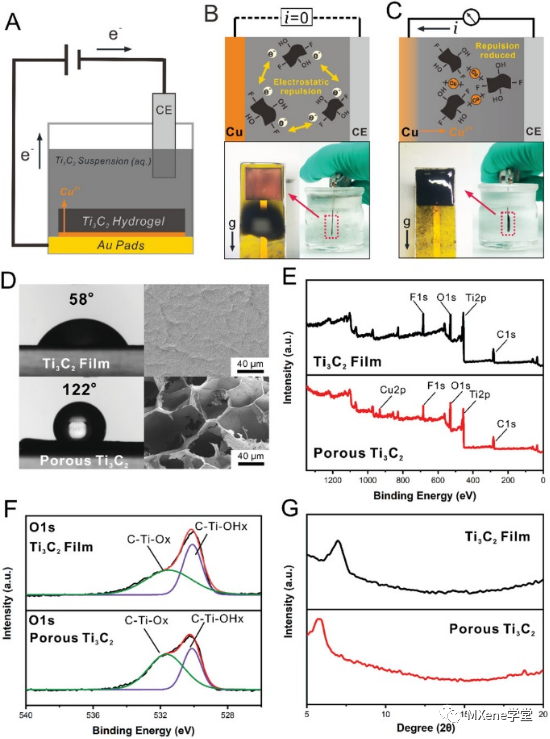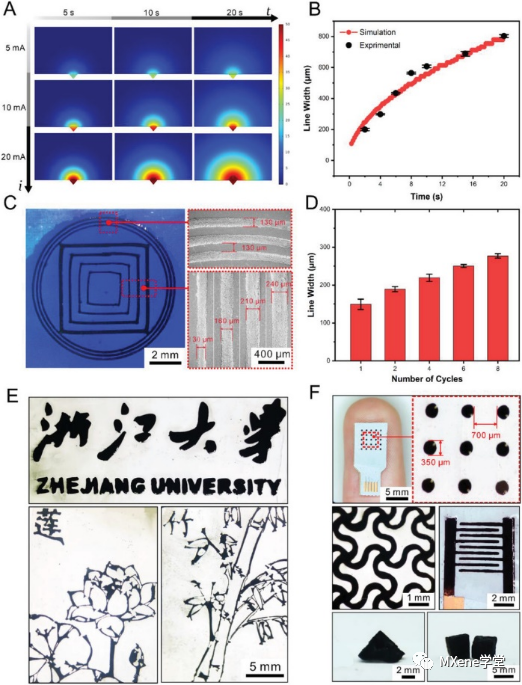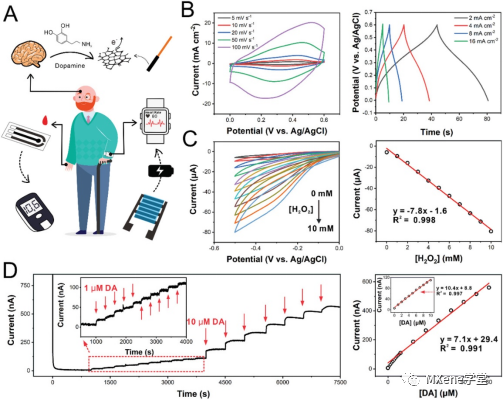Background.
Since its discovery in 2011, transition metal carbides or nitrides (MXenes) have attracted great attention because of their unique properties. Assembling 2D MXene wafers into 3D porous structures can bring more active sites and larger specific surface area, which makes porous MXene-based devices have more advanced performance in a variety of applications. Although there are many ways to form porous MXene, a strategy capable of patterning porous MXene is needed so that it can be integrated with multi-functional and multi-channel electronic devices.
Full text guide.
In view of this, a metal-assisted electrogelation method is proposed, which can directly form MXene hydrogels with adjustable porous structure. The electrogelation process is initiated by electrolysis of metal cations released by sacrificing metals. This method is used to achieve high spatial resolution as low as micron, thus achieving high-performance hydrogels with more complex structures. The porous MXene, prepared by this metal-assisted electrogelation process shows a promising application prospect in the field of energy and biochemical sensors. The material has a capacitance of 33.3 mF cm-2 when used in supercapacitors and shows a significant current response to metabolites in biochemical sensor applications, indicating that the metal-assisted electrogel method will become a forward-looking technology for the fabrication of MXene-based devices. The results of related papers are published on Advanced Functional Materials under the title "Controllable Patterning of Porous MXene (Ti3C2) by Metal-Assisted Electro-Gelation Method".
The figure shows the process of preparing porous Ti3C2 MXene hydrogel with the aid of copper. The electrogelation process of porous Ti3C2 MXene consists of three steps: 1) designing patterns on the printed circuit board (PCB); 2) electrodepositing Cu on Au pads; and 3) adding Ti3C2 MXene suspension to complete the electrogelation process. The controllability of this method not only lays the foundation for the realization of more complex hydrogel patterns, but also broadens the application scene of Ti3C2 hydrogels.

Figure 1: preparation of porous Ti3C2 MXene hydrogels with controllable patterns.
The following is a schematic diagram of an electrochemical battery used in the electrogelation process. After applying potential or current bias, copper cations will be produced around the working electrode with the consumption of sacrificial copper and interact with MXene sheets locally to produce porous hydrogels. Compared with Ti3C2 films, the interlayer spacing of porous Ti3C2 is larger, which effectively eliminates the restacking phenomenon between MXene films.

Figure 2: study on the 3D assembly mechanism of porous Ti3C2 MXene.
The following figure shows some possible patterned device options, such as microelectrode arrays, mesh sensors, or InterDigital electrodes fabricated on PCB. In addition, the electrogelation process can also be used to prepare more advanced Ti3C2 MXene 3D hydrogels.

Figure 3: exploration of pattern resolution using electrogel method.
The following figure shows a schematic diagram of the application of devices modified by multi-functional porous MXene hydrogels in human health monitoring. The device shows a good linear potential-time curve at different current densities from 2 to 16 mA cm-2. The calculated area capacitance is up to 33.3 mF cm-2, and the capacity retention is more than 80% after 1000 charge-discharge cycles.

Prospect.
A metal-assisted electrogelation method was proposed to prepare porous MXene hydrogels with controllable patterns. The proposed method not only solves the problem that porous MXene hydrogels can not be patterned directly, but also provides a new idea for modifying porous MXene to various devices. The remarkable characteristics of the controllability of space and resolution prove the great advantage of this method, and the minimum hydrogel pattern resolution as low as micron can be achieved. The supercapacitors and biochemical sensors prepared by this method show good energy storage and detection performance respectively, which provides a strong support for extending this method to a variety of other devices based on porous MXene.
This information is from the Internet for academic exchange only. if there is any infringement, please contact us to delete it immediately.







